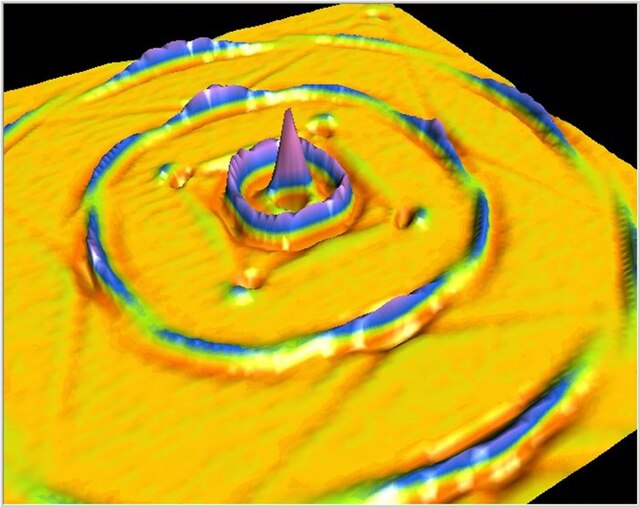An analog delay line is a network of electrical components connected in cascade, where each individual element creates a time difference between its input and output. It operates on analog signals whose amplitude varies continuously. In the case of a periodic signal, the time difference can be described in terms of a change in the phase of the signal. One example of an analog delay line is a bucket-brigade device.
Electric delay line (450 ns) from a color TV-set. Made of enamelled copper wire, wound in one layer around a copper tube and forming a distributed inductor-capacitor network.
A magnetostrictive torsion wire delay line
FUJIC's ultrasonic mercury delay line memory (capacity: 255 words = 8,415 bits)
Ultrasonic delay line from a PAL color TV (delay time 64 μs), showing path of sound waves (pink) and transducers (yellow, upper left)
A surface acoustic wave (SAW) is an acoustic wave traveling along the surface of a material exhibiting elasticity, with an amplitude that typically decays exponentially with depth into the material, such that they are confined to a depth of about one wavelength.
Experimental image of surface acoustic waves on a crystal of tellurium oxide





